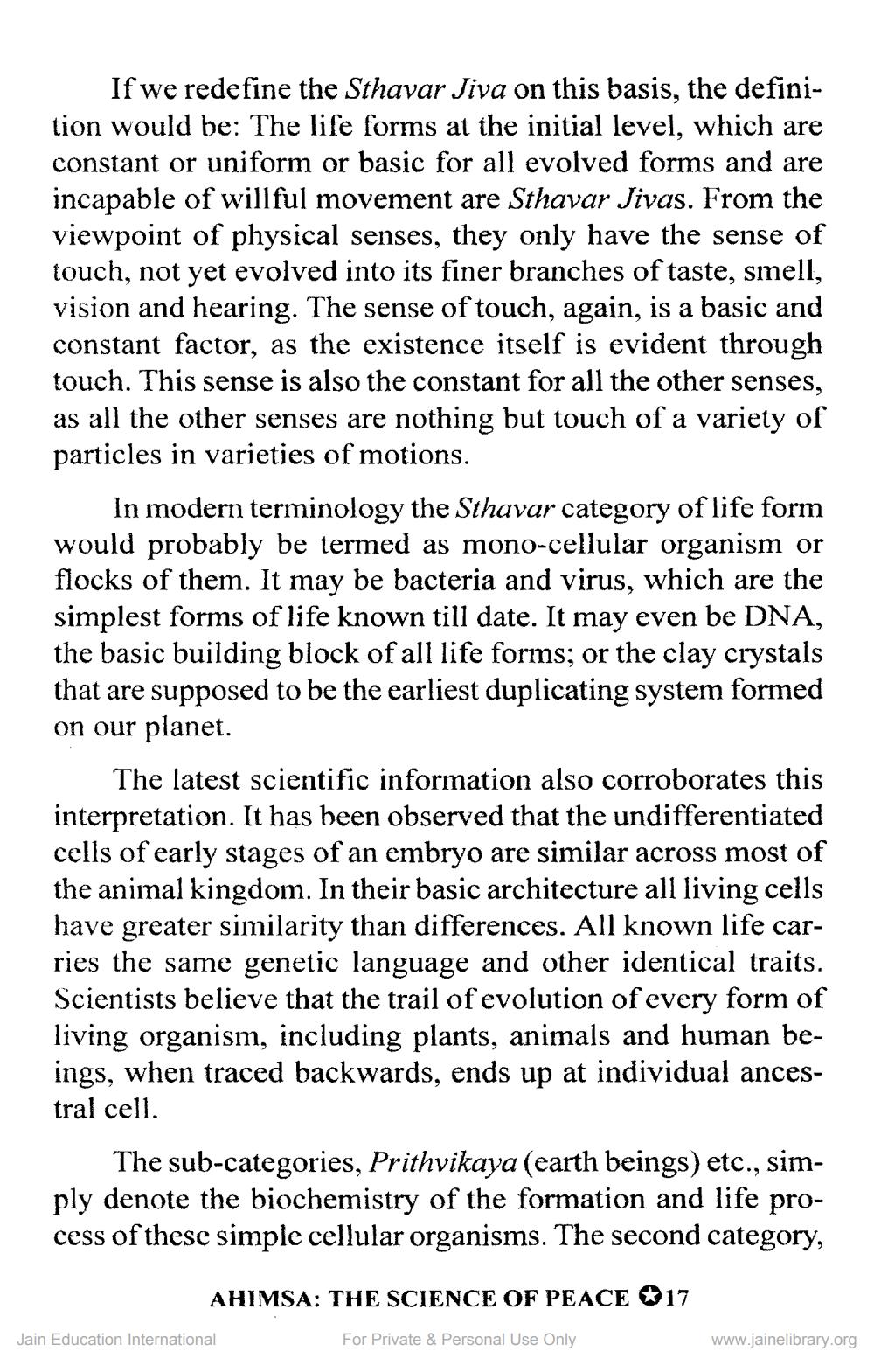________________
If we redefine the Sthavar Jiva on this basis, the definition would be: The life forms at the initial level, which are constant or uniform or basic for all evolved forms and are incapable of willful movement are Sthavar Jivas. From the viewpoint of physical senses, they only have the sense of touch, not yet evolved into its finer branches of taste, smell, vision and hearing. The sense of touch, again, is a basic and constant factor, as the existence itself is evident through touch. This sense is also the constant for all the other senses, as all the other senses are nothing but touch of a variety of particles in varieties of motions.
In modern terminology the Sthavar category of life form would probably be termed as mono-cellular organism or flocks of them. It may be bacteria and virus, which are the simplest forms of life known till date. It may even be DNA, the basic building block of all life forms; or the clay crystals that are supposed to be the earliest duplicating system formed on our planet.
The latest scientific information also corroborates this interpretation. It has been observed that the undifferentiated cells of early stages of an embryo are similar across most of the animal kingdom. In their basic architecture all living cells have greater similarity than differences. All known life carries the same genetic language and other identical traits. Scientists believe that the trail of evolution of every form of living organism, including plants, animals and human beings, when traced backwards, ends up at individual ancestral cell.
The sub-categories, Prithvikaya (earth beings) etc., simply denote the biochemistry of the formation and life process of these simple cellular organisms. The second category,
AHIMSA: THE SCIENCE OF PEACE 17
Jain Education International
For Private & Personal Use Only
www.jainelibrary.org




